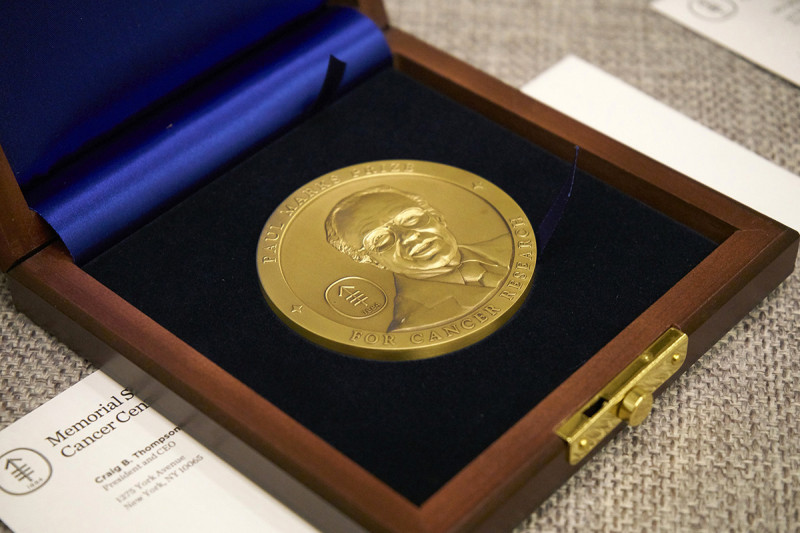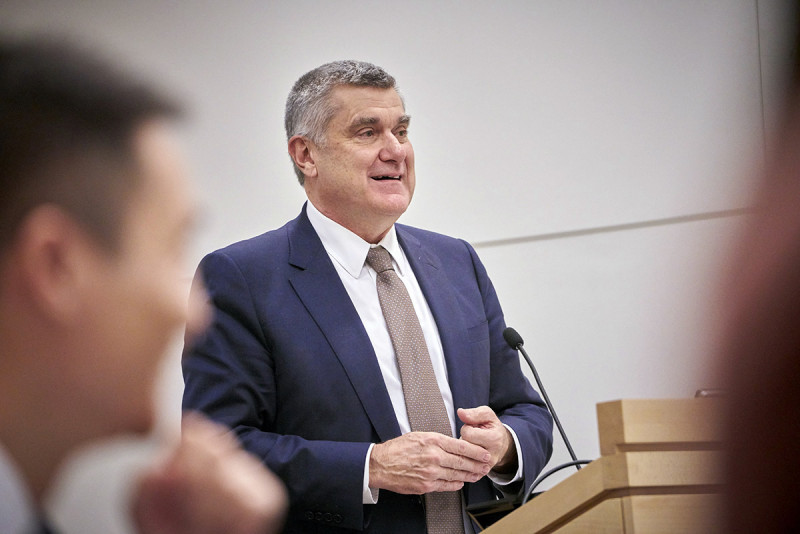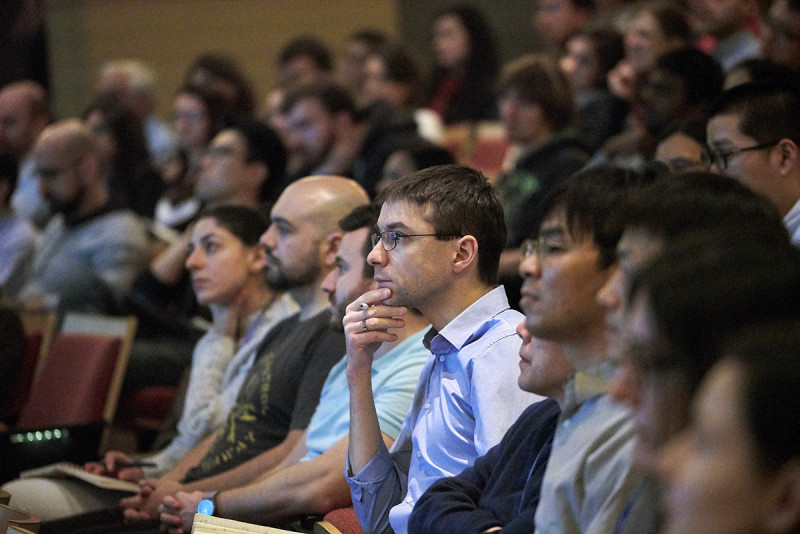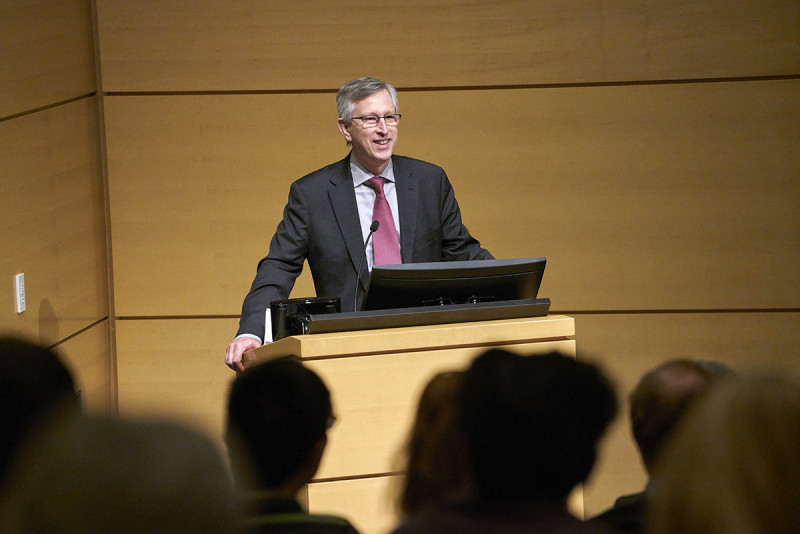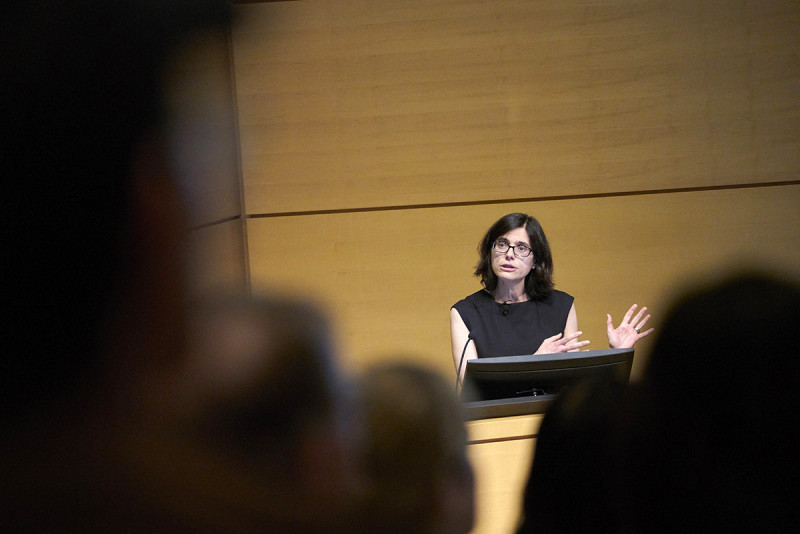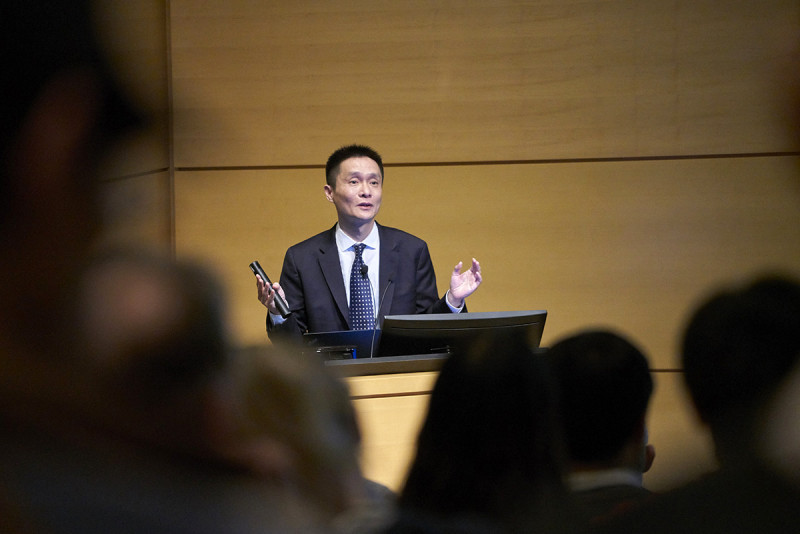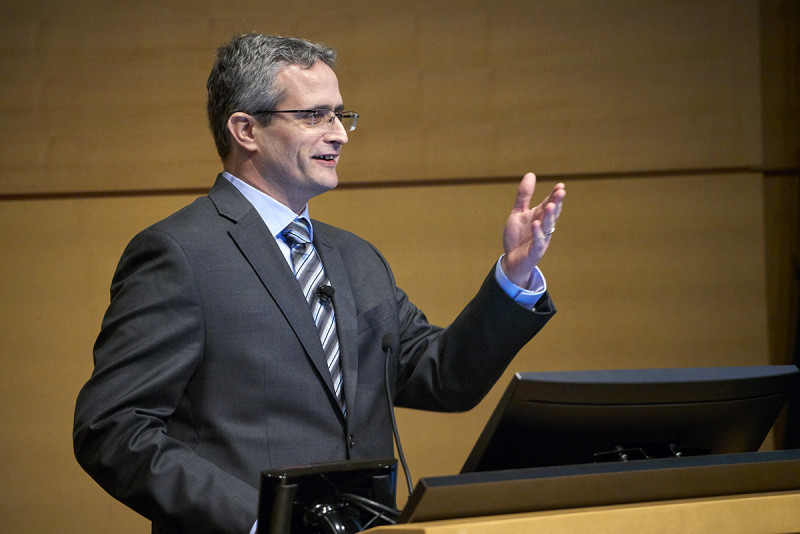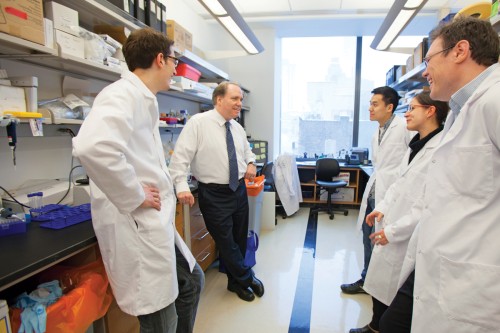Memorial Sloan Kettering has named three investigators as recipients of this year’s Paul Marks Prize for Cancer Research. The award recognizes promising investigators aged 45 or younger at the time of nomination for their efforts in advancing cancer research.
The winners are Gad (Gaddy) Getz, of the Broad Institute of the Massachusetts Institute of Technology (MIT) and Harvard, the Massachusetts General Hospital (MGH) Cancer Center, and Harvard Medical School; Chuan He, of the University of Chicago; and Aviv Regev, also of the Broad Institute. Each will receive an award of $50,000 and give a scientific presentation at a symposium held at MSK on November 30.
The award was created to honor Paul Marks, President Emeritus of MSK, for his contributions as a scientist, teacher, and leader during the 19 years he led the institution.
“In order to tackle the problem of cancer, we need to develop a better understanding of the fundamental processes that lead to its formation,” says Craig Thompson, MSK’s President and CEO. “Throughout his career, Paul Marks championed this approach, and for this reason the continued support of innovative research is an important part of his legacy. The 2017 Marks Prize winners all have contributed to a deeper and more fundamental understanding of cancer.”
A committee of prominent members of the cancer research community selected the winners. The committee was chaired by Helen Piwnica-Worms, a professor of experimental radiation oncology at MD Anderson Cancer Center in Houston and a leader in the field of cancer research.
“We had an impressive assemblage of nominees this year. These three scientists are among the best of the best,” Dr. Piwnica-Worms says. “The selection committee felt very strongly that this year’s recipients have already made critical contributions to the field of cancer research and are truly poised to continue playing major leadership roles in the coming years.”
Since it was first presented in 2001, the biennial prize has recognized 28 young scientists and has awarded more than $1 million.
Gad (Gaddy) Getz
Dr. Getz is an Institute Member and Director of Cancer Genome Computational Analysis at the Broad Institute. He is also Director of Bioinformatics at the MGH Cancer Center and Department of Pathology. In addition, he is an associate professor of pathology at Harvard Medical School and the Paul C. Zamecnik Chair in Oncology at the MGH Cancer Center.
He uses computational biology to study the genomic changes that allow normal cells to become cancerous. He is interested in how the cells continue to become more aggressive and eventually dominate their environment.
Dr. Getz explains that his research falls under two umbrellas. The first is characterization, which involves analyzing the genomic changes in an individual tumor sample. “We want to learn what events and mutational processes got them to that place,” he says.
The second part is interpretation, which involves studying data from many samples to look for patterns. “It’s hard to look at a single sample and know which mutations are driving the tumors and which are passengers,” he adds. “We need statistical models and samples from many tumors to determine which genes and pathways are mutated at a higher rate than what you would expect to see by chance.”
Dr. Getz, who has been involved in a number of multicenter cancer-sequencing projects, including the Cancer Genome Atlas and the International Cancer Genome Consortium, stresses the importance of collaboration in his research. “The future of this field is only going to be more collaborative,” he says. “To have the statistical power to find these cancer drivers, we need to look at data from all over the world. Including greater numbers of people is key to making a difference in this field.”
In addition, he notes, it’s important to involve doctors. They are able to connect the genomic changes observed in a lab with what happens in people with cancer and to translate the findings into new treatments that can be tested in the clinic.
Dr. Getz earned his doctorate in physics from the Weizmann Institute of Science in Israel.
Chuan He
Dr. He is the John T. Wilson Distinguished Service Professor in chemistry, biochemistry, and molecular biology at the University of Chicago and Director of its Institute for Biophysical Dynamics and a Howard Hughes Medical Institute (HHMI) investigator. He is also director of the Synthetic and Functional Biomolecules Center at Peking University in China.
He is an expert in the field of cancer epigenetics and RNA modification biology. Epigenetics involves variations in the way that genes are expressed that don’t affect the actual DNA sequence. “The human genome contains 3 billion base pairs but only roughly 20,000 genes,” he says. “We have tens of trillions of cells and about 200 different tissue or cell types. Epigenetics facilitates cell differentiation into different identities, despite having the same genetic sequence in an individual human being.”
His major contribution to the field is that he was the first to put forward the idea that modifications to RNA are reversible and can control gene expression. RNA is the molecule that carries DNA’s “message” to the protein-making machinery of a cell. Controlling RNA is one of the major ways to affect the outcome of gene expression.
“When I started this work back in 2008 and 2009, we knew that proteins called writers could install modifications to RNA molecules that altered their function. But no one knew that there were also proteins called erasers that could undo these changes,” Dr. He explains. His team went on to identify the eraser proteins for the first time. In later work, they characterized a series of reader proteins that explain how RNA methylation functions.
“This research laid down the mechanistic pathways for our current understanding of how these modifications impact biological outcomes, including those related to cancer,” he says. “Cancer and other diseases can hijack aberrant RNA methylation to gain a survival advantage, allowing cells to proliferate and grow out of control.”
Such RNA changes are known to play a role in many types of cancer. These include endometrial cancer, acute myelogenous leukemia, and glioblastoma. Dr. He’s work forms some of the foundations for developing potential therapies that target RNA methylation effectors against human cancer.
He earned his doctorate in chemistry from MIT.
Aviv Regev
Dr. Regev is director of the Klarman Cell Observatory at the Broad Institute, a professor in the biology department at MIT, and an HHMI investigator. She is also one of the leaders of Human Cell Atlas, an international effort to build a collection of maps that will describe and define the cellular basis of health and disease.
She has been a pioneer in developing experimental and computational methods for the genomic analysis of single cancer cells. In particular, she has studied the process called RNA sequencing (RNA seq). RNA seq looks at RNA rather than DNA. It enables investigators to determine which genes are being expressed, or “turned on,” in certain cells.
Dr. Regev explains that to leverage the full benefits of next-generation sequencing, it’s important to look at cells on the individual level, rather than looking at the makeup of an entire tumor. “You can think of the way tumors have traditionally been analyzed as a fruit smoothie. All the cell types are mixed together, and it’s hard to determine what makes up the mixture,” she says. “Single-cell analysis is more like looking at a fruit salad. You can not only characterize each fruit individually but also determine how much of each type is present.”
Dr. Regev has made discoveries thus far in two types of cancer: brain tumors and melanoma. By using this single-cell method, her team has discovered that although oligodendroglioma and astrocytoma, two types of brain cancer, appear to be very different, they both contain the same cancer stem cells. These stem cells account for what makes them difficult to treat and could yield insights into how targeted therapies could be developed that would be effective against both cancers.
Her lab has determined that a small subset of melanoma tumor cells is resistant to therapy before treatment has even started. These findings offer new clues about how to best treat individuals.
In addition to her own research, Dr. Regev is also active in helping many other investigators use the methods she has developed. “These insights will help everyone who works in this area to develop better diagnostics and better therapies,” she says.
She earned her doctorate in computational biology from Tel Aviv University in Israel.
